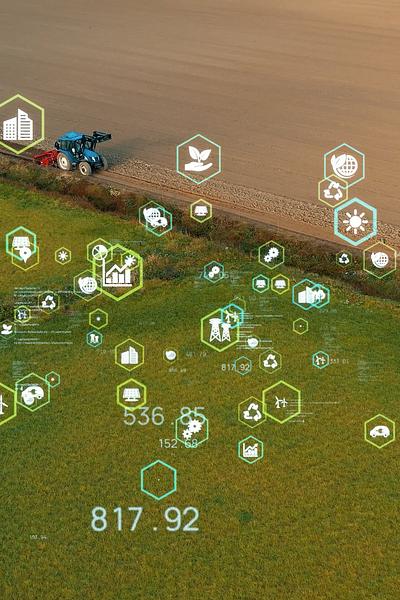Originally featured on (this will open in a new window)TeckUK
Author: (this will open in a new window)Emma Philpott, Head of Space

Technological developments enabling real-time data and advanced data analysis are creating significant opportunities for the agriculture industry around automation and autonomy.
This enables farmers to increase the efficiency and sustainability of their operations at a time when they are facing unprecedented demand for greater yields balanced against challenges, including labour shortages and more unpredictable weather cycles. These technological advancements, which are needed to help support our farming industry, can only be harnessed if the underlying connectivity is available. Advanced connectivity is foundational to agri-tech use cases such as precision agriculture, remote machine monitoring and machine-to-machine (M2M) communications, many of which are already being adopted and utilised within the farming community.
Traditional terrestrial connectivity options such as fibre and mobile are not always available to rural farming communities. To provide the advanced connectivity required, satellite communications are now playing a critical role in addressing connectivity gaps, helping to usher in a new age of smart agriculture, and further transforming the farming sector.
Satellite communication can benefit the agricultural industry
In 2022, (this will open in a new window)John Deere called on the satellite industry to find a solution to connect tractors with ‘always-on connectivity’. Jump forward to 2024, and the Low Earth Orbit (LEO) satellite communication providers have further expanded their reach into sectors including agriculture, maritime and airlines, including the announcement earlier this year that John Deere had signed a deal with SpaceX and its Starlink constellation to provide satellite connectivity to their agricultural machines. While this initial agreement is limited to the U.S and Brazil, it recognises the importance satellite connectivity is now starting to play within the agricultural sector.
Reliable connectivity is now essential for all our personal and professional lives and is the foundation for communication, collaboration and productivity, with the agriculture industry being no different.
A recent (this will open in a new window)National Farmers Union (NFU) survey revealed:
- 92% of respondents believe broadband connectivity is essential for their businesses.
- connectivity issues are still holding back farmers in the UK, with only 34% having access to fibre broadband
- 76% reported some level of unreliable mobile signal across outdoor locations on their farms
With the global population expected to grow to almost 9.7 billion by 20502 and overall food production needing to rise by 50% and possibly up to 70% to feed this growing population, this is putting unprecedented demand on the farming industry.
To meet this demand, farmers are looking at advanced agricultural applications in order to not only help yield greater crops but also help deliver significant cost savings. These applications include precision agriculture techniques to help farmers better monitor their crops for signs of disease and the impact of weather and pests to improve overall crop health. Vehicle downtime in farming can also make or break a season. Remote diagnostics can now offer farmers the ability to remote access their vehicle fleet in real-time to help troubleshoot issues. At the same time, notification alerts can also be sent notifying farmers when a vehicle has stopped working or if a part is about to fail, enabling it to be swapped out ahead of time. M2M communication also ensures pesticides and fertiliser are only applied where needed. Coverage maps show where vehicles have applied products so no spot within a field is over or under applied, and every seed or plant within the field gets precisely what it needs.
These applications are only possible with advanced connectivity. Previously, those farms without reliable terrestrial connectivity would have been unable to access such applications. With LEO high-speed satellite communications becoming more widely recognised and the costs declining, the connectivity is in place, opening the doors to further production efficiencies.
It is not just current applications but also future use cases that depend on advanced connectivity
Reliable connectivity is also essential in unlocking new and future use cases centred on automation and autonomy, some of which are already at the tentative stages of development and adoption. John Deere has recently introduced further automation within their vehicle fleet using ‘Predictive Ground Speed Automation’, which uses live camera feedback to detect crop height and density. This is combined with satellite imagery of the fields to create a biomass map enabling higher quality harvests. GPS based guidance using the Global Navigation Satellite System (GNSS), is allowing farm machinery to be navigated with even greater accuracy. Autonomous solutions are also starting to come to market, such as autonomous tractors for land cultivation, and it is expected this will be taken further with autonomous machines used for planning, application and harvest being available by 2030. All these use cases will only be able to be harnessed if high speed connectivity is made available.
It is clear that the agricultural industry has a growing dependency on the space sector in order to help address the connectivity coverage gaps and provide advanced connectivity to help make farming more productive, profitable and sustainable and to feed our growing global population.
Get in touch
Interested in transforming your agricultural operations with satellite connectivity? Get in touch to learn how FarrPoint can help you find efficient and sustainable solutions.

